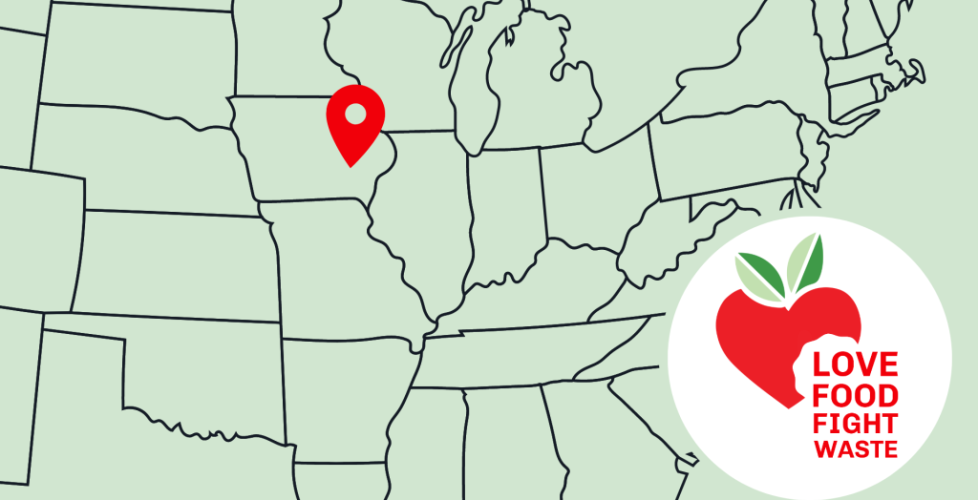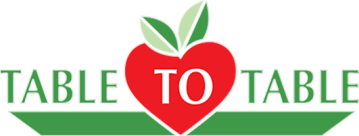Food Waste Profile in Johnson County
With Food Waste Prevention Week from April 10-16, Stop Food Waste Day on April 26, and the Love Food, Fight Waste program hitting its one year anniversary, it is time to celebrate!
According to the 2022 Iowa Statewide Material Characterization Study conducted by the Iowa Department of Natural Resources, approximately 20.4% of what ends up in the Iowa City Landfill is food waste. In 2022, the Iowa City Landfill properly landfilled 130,109.46 tons of garbage from our service area – Johnson County, Kalona, and Riverside. Of that, about 26,542 tons was food waste.
While that is a lot of food waste, we are thrilled to report that our Johnson County community has successfully reduced landfilled food waste. The last waste characterization study was conducted in 2017 and found that food waste made up over 25% of materials entering the Iowa City Landfill. A 5% reduction might not seem like a lot, but in fact, that equates to over 6,000 tons of food! Way to go, Johnson County community!
Why do we want to reduce food waste and keep food out of the landfill?
When food is wasted, it wastes all the resources that went into growing, manufacturing, distributing, and transporting that food. At the landfill, once garbage is compacted into place by our trained Landfill Operators, there is no air (oxygen) or light in a landfill hole. This is the perfect environment for methane, a very potent greenhouse gas, to be produced in the absence of oxygen and in the presence of so many organic materials (food waste). One of the best things each of us can do to take climate action is to reduce food waste.
A great alternative for food waste disposal is composting. While we encourage good, edible food to be eaten as the first priority, we will always have the inevitable banana peels, eggshells, and coffee grounds that we want to responsibly dispose of. Composting is a great option for those items! For a deep dive into composting, check out this Love Food, Fight Waste article on composting.
Who is recovering food in Johnson County?
That 5% reduction in food waste over the past five years was aided in part by Table to Table’s (T2T) increase in food recovery. T2T saw up to a 60% increase in the amount of food rescued annually since the last waste audit.
Table to Table manages a complex food rescue network throughout Johnson County involving more than 100 food donors and 50 recipient organizations. Food donors include area stores, warehouses, processors, restaurants, farms, markets, and gardeners that donate their unsold or extra food to Table to Table. T2T volunteers deliver this food directly to organizations that are serving our neighbors in need so this food reaches people as quickly as possible. These organizations include food pantries, shelters, hot meal sites, and youth programs that connect rescued food to our neighbors. Ultimately, people rescue food by eating it: using it for its intended purpose!
In 2022, T2T recovered 2.2 million pounds of food, redirecting it throughout our community where it was needed and feeding more than 22,000 people. More than half of this food is produce, protein, and dairy. Remember that the top five most commonly wasted foods are apples (produce), potatoes (produce), cheese (dairy), milk (dairy), and bread. T2T is making a huge local impact in these most-wasted categories.
T2T rescued food provides about half the total food that the three largest local pantries distribute. Plus, recovered food helps provide more options, including vegan and gluten free foods and a variety of produce grown locally.
Activity
- Rescue food in our community! If you have a little extra room in your schedule on weekday or Saturday mornings, sign up to volunteer with Table to Table. Volunteer opportunities include recovering and delivering food on food rescue routes, prepping our food rescue vehicles, and harvesting veggies in farm fields this summer. Visit T2T’s volunteer page, email volunteer@table2table.org, or call 319-337-3400 for more information.
- Educate yourself on local options to donate extra food and personal care items. Here are just a few wish lists from organizations serving our neighbors:
- CommUnity
- Coralville Community Food Pantry
- North Liberty Community Pantry
- Food Pantry at Iowa
- Iowa City Free Lunch
- Shelter House Iowa City
- You may also bring items (dry goods, garden produce, pet food, and hygiene products) to Table to Table to deliver throughout the local hunger relief network.
Resources
- 2022 Iowa Statewide Material Characterization Study
-
Iowa Department of Natural Resources article: “A Land of Plenty Wasted – Food Waste in Iowa”
-
Iowa City Press Citizen article: “Johnson County residents get access to free, healthy food thanks to local nonprofits”
Read more Love Food, Fight Waste topics, brought to you by Table to Table and the City of Iowa City.


